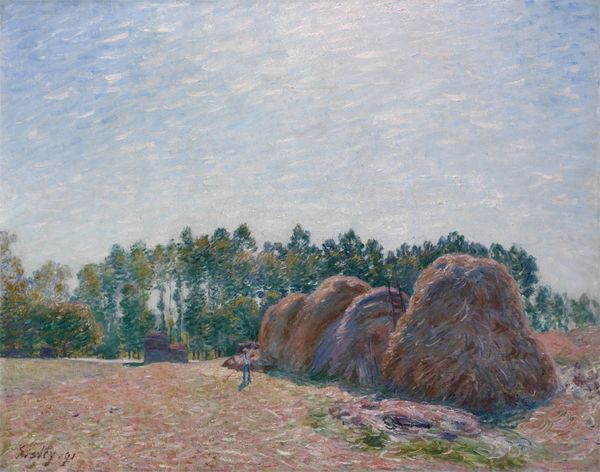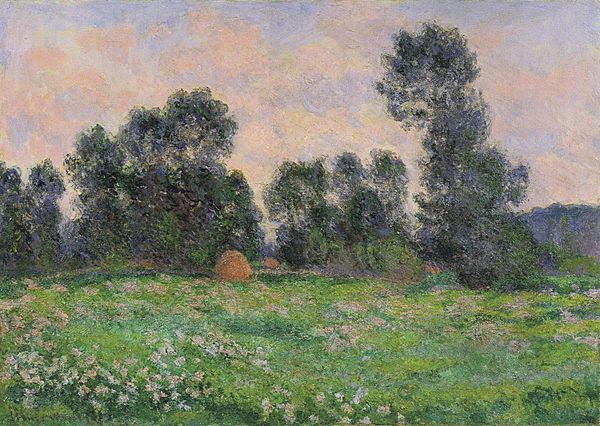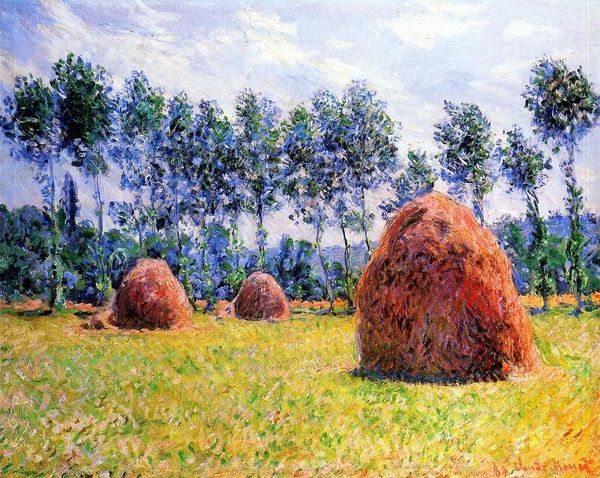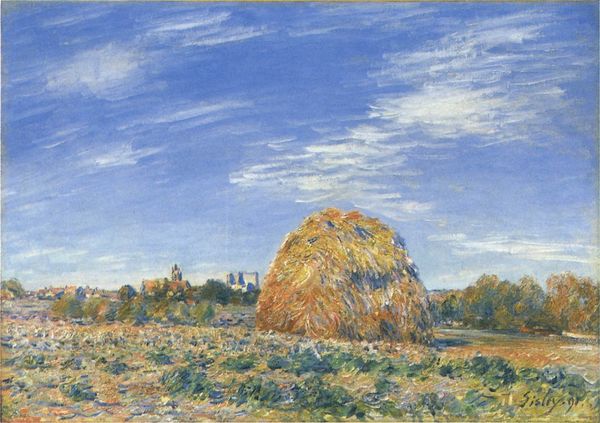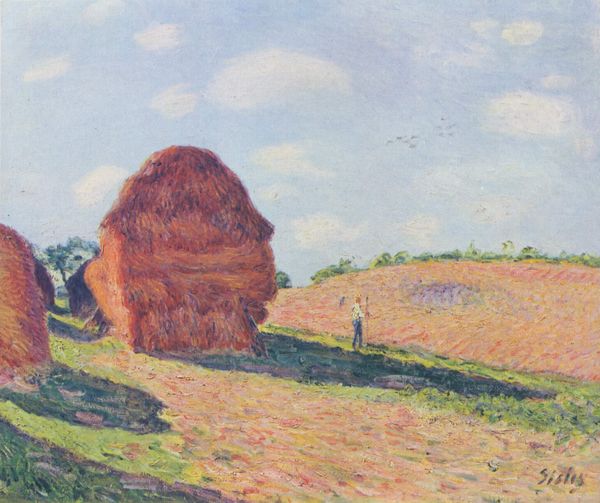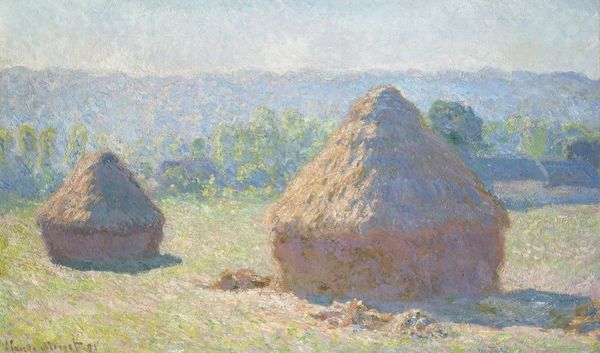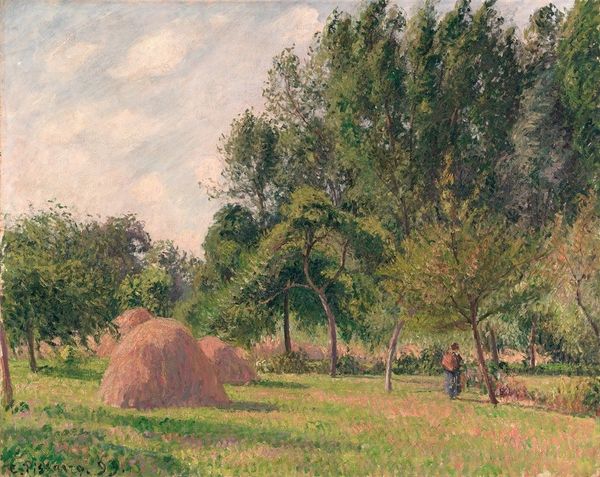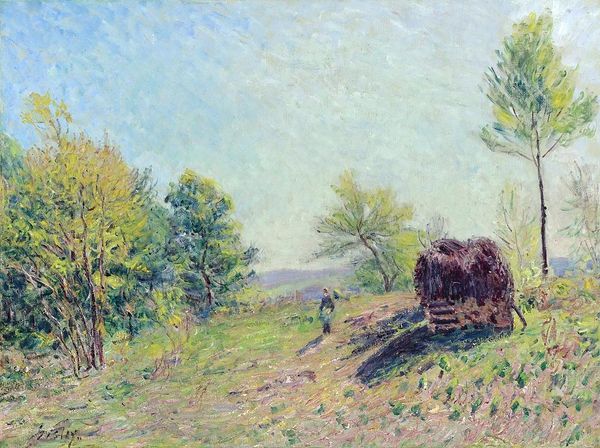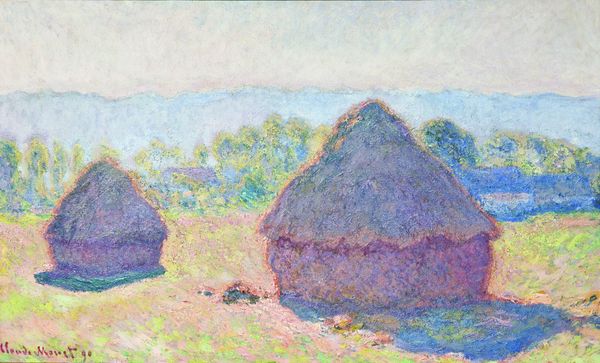
painting, plein-air, oil-paint
#
painting
#
impressionism
#
plein-air
#
oil-paint
#
landscape
#
impressionist landscape
#
nature
Copyright: Public domain
Editor: Here we have Claude Monet's "Haystack at Giverny," an oil on canvas from 1885. I’m struck by how solid the haystack appears, despite being rendered with such ephemeral brushstrokes. It has such a palpable presence! What do you see in this piece, considering the weight these images can carry? Curator: It's interesting you point out that sense of solidity. The haystack, of course, is an emblem of agrarian life, but more subtly, a powerful symbol of accumulated labor, both human and natural. Consider the pyramid. Does the shape elicit thoughts of a monumental, man-made construction? Editor: It does a little, now that you mention it! In a simplified form. Curator: Exactly! Monet invites us to see the haystack not just as a rustic subject, but as an almost primal form. Look closely, and you will notice how its presence anchors the entire scene, acting as a silent observer, enduring. The impressionistic brushstrokes might initially appear fleeting, yet the cumulative effect suggests something permanent, timeless even. Editor: So it’s about taking a mundane object and imbuing it with a sense of historical significance? Curator: Precisely. Think about what "hay" itself represented in 1885 - the provision, work, reward, etc. Editor: Fascinating. I hadn’t considered that the haystack could be seen as a symbol, but it’s so clear now! It completely changes how I view Monet’s Impressionism, recognizing symbolic intention beyond the visual capture. Curator: I'm glad it clicked for you! The artist makes the subject glow. Never take a seemingly "simple subject" at face value, eh? Editor: Absolutely, thank you! It makes the painting more thought-provoking!
Comments
No comments
Be the first to comment and join the conversation on the ultimate creative platform.
